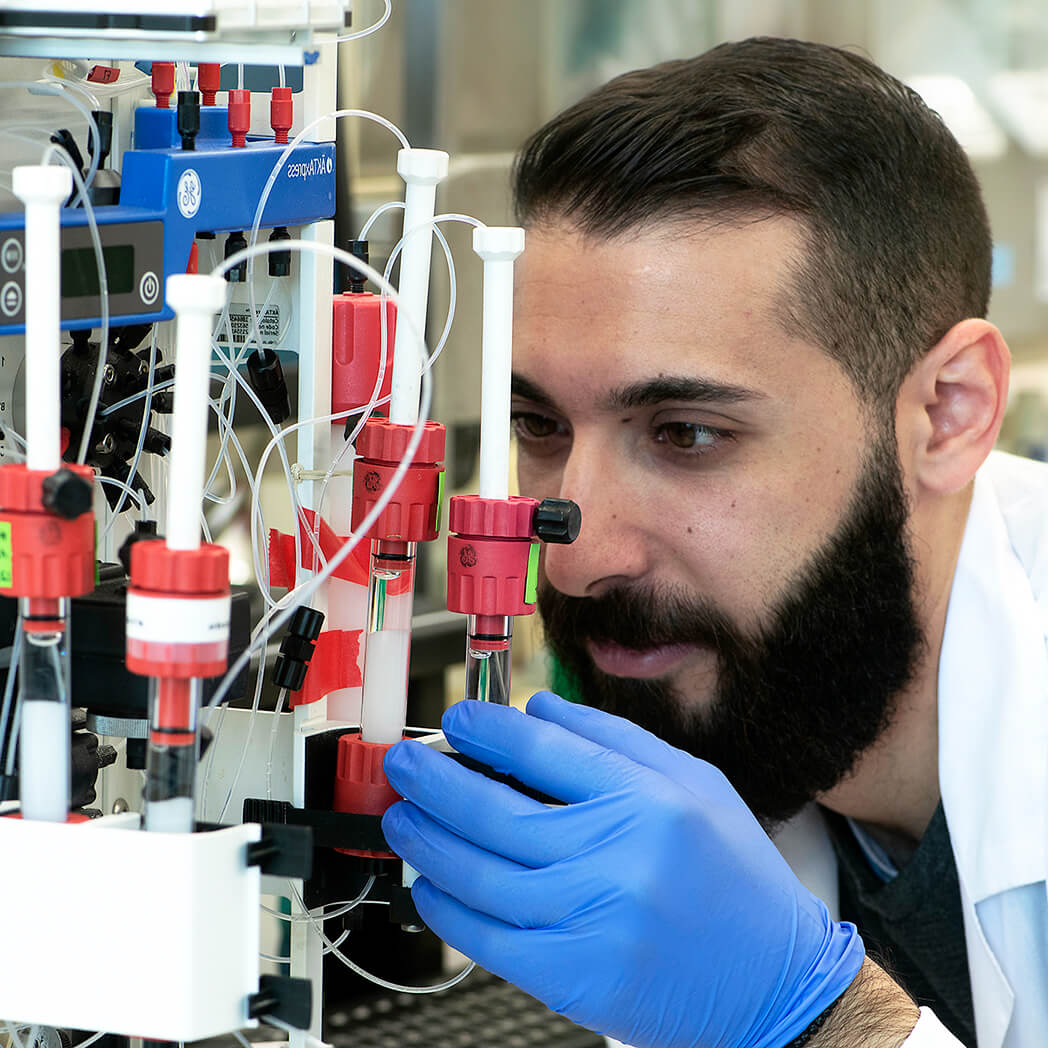Overview
Cat #:
Size:
10 g
Lot:
H100SM0110
Alternative Name Simpatoblock, Hexamethonium dibromide, Gangliostat, Esametina, Hexameton, Vegolysen, Vegolysin, Hexonium dibromide
Lyophilized Powder yes
Source Synthetic
MW: 362.2
Purity: 98%.
Effective concentration 100 nM - 1 mM.
Chemical name N,N,N,N′,N′,N′-Hexamethylhexamethylenediammonium dibromide.
Molecular formula C12H30Br2N2.
CAS No.: 55-97-0
Activity Hexamethonium bromide blocked acetylcholine evoked currents with IC50 of 8.7 µM and 430 nM for α3β2 and α3β4 nicotinic channels expressed in Xenopus oocytes1.
References-Activity
- Cachelin A.B. and Rust G. (1995) Pflugers Arch. 429, 449-451.
Shipping and storage Shipped at room temperature. Product as supplied can be stored intact at room temperature for several weeks. For longer periods, it should be stored at -20°C.
Solubility Water. Centrifuge all product preparations before use (10000 x g 5 min).
Storage of solutions Up to four weeks at 4°C or three months at -20°C.
Our bioassay
 Alomone Labs Hexamethonium bromide blocks α3/β4 nAChR heterologously expressed in Xenopus oocytes.Time course of current reversible inhibition by 10, 20 and 40 µM Hexamethonium bromide (#H-100). Holding potential was -80 mV and inward current was elicited by continuous application of 2 µM acetylcholine (period of application is indicated by the horizontal bar on top).
Alomone Labs Hexamethonium bromide blocks α3/β4 nAChR heterologously expressed in Xenopus oocytes.Time course of current reversible inhibition by 10, 20 and 40 µM Hexamethonium bromide (#H-100). Holding potential was -80 mV and inward current was elicited by continuous application of 2 µM acetylcholine (period of application is indicated by the horizontal bar on top).
Target nAChR
Lyophilized Powder
For research purposes only, not for human use
Last Update: 30/03/2021
Specifications
Citations
Citations

